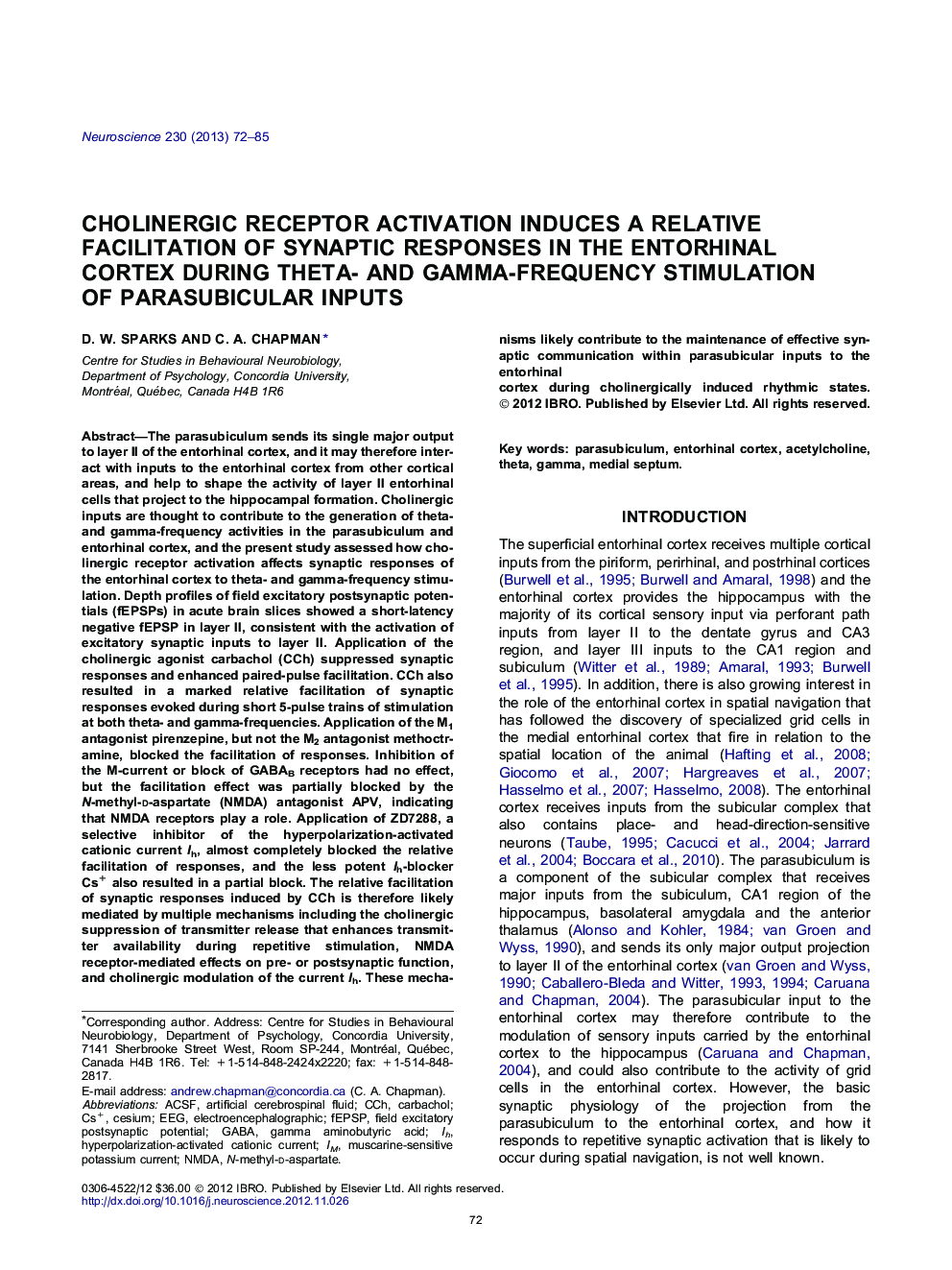| کد مقاله | کد نشریه | سال انتشار | مقاله انگلیسی | نسخه تمام متن |
|---|---|---|---|---|
| 4338077 | 1614846 | 2013 | 14 صفحه PDF | دانلود رایگان |

The parasubiculum sends its single major output to layer II of the entorhinal cortex, and it may therefore interact with inputs to the entorhinal cortex from other cortical areas, and help to shape the activity of layer II entorhinal cells that project to the hippocampal formation. Cholinergic inputs are thought to contribute to the generation of theta- and gamma-frequency activities in the parasubiculum and entorhinal cortex, and the present study assessed how cholinergic receptor activation affects synaptic responses of the entorhinal cortex to theta- and gamma-frequency stimulation. Depth profiles of field excitatory postsynaptic potentials (fEPSPs) in acute brain slices showed a short-latency negative fEPSP in layer II, consistent with the activation of excitatory synaptic inputs to layer II. Application of the cholinergic agonist carbachol (CCh) suppressed synaptic responses and enhanced paired-pulse facilitation. CCh also resulted in a marked relative facilitation of synaptic responses evoked during short 5-pulse trains of stimulation at both theta- and gamma-frequencies. Application of the M1 antagonist pirenzepine, but not the M2 antagonist methoctramine, blocked the facilitation of responses. Inhibition of the M-current or block of GABAB receptors had no effect, but the facilitation effect was partially blocked by the N-methyl-d-aspartate (NMDA) antagonist APV, indicating that NMDA receptors play a role. Application of ZD7288, a selective inhibitor of the hyperpolarization-activated cationic current Ih, almost completely blocked the relative facilitation of responses, and the less potent Ih-blocker Cs+ also resulted in a partial block. The relative facilitation of synaptic responses induced by CCh is therefore likely mediated by multiple mechanisms including the cholinergic suppression of transmitter release that enhances transmitter availability during repetitive stimulation, NMDA receptor-mediated effects on pre- or postsynaptic function, and cholinergic modulation of the current Ih. These mechanisms likely contribute to the maintenance of effective synaptic communication within parasubicular inputs to the entorhinal cortex during cholinergically induced rhythmic states.
► The parasubiculum sends its major output projection to layer II of the entorhinal cortex.
► The cholinergic agonist carbachol (CCh) suppresses evoked field EPSPs in this pathway.
► However, responses during θ- and γ-frequency trains are facilitated or maintained in CCh.
► CCh acts via modulation of Ih and NMDA responses to produce the facilitation.
► The facilitation effect may help maintain neuronal communication during θ and γ EEG activities.
Journal: Neuroscience - Volume 230, 29 January 2013, Pages 72–85